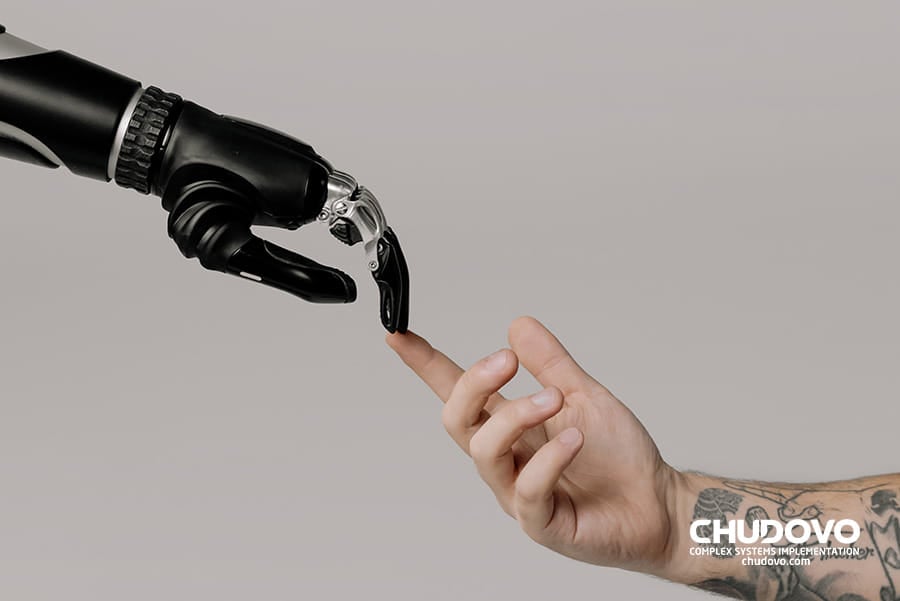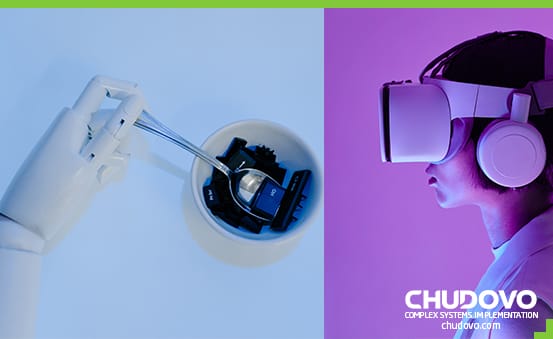Exploring the World of Haptic Feedback
Imagine being able to hear but not feel a ball. Or imagine being able to see but not feel a piece of fabric. Kind of weird, right? Well, that is exactly how it would be if you have no sense of touch, which is, for obvious reasons, unimaginable.
The fact is that, since the very beginning of time, the sense of touch has been a very powerful tool for living beings to understand the world around them. And, with the advancement in technology, the world has taken huge leaps, and so has the human sense of touch. There have been numerous exciting developments in the area, one of which is the “haptic feedback.”
In this blog post, we will be exploring the world of Haptic Feedback and getting to know more about it. Read on to learn about the new-age technology and its benefits to the world and find out how it has improved the user experience for people. So, let’s begin.
Table of Contents
- What is Haptics?
- What is Haptic Feedback?
- Types of Haptic Feedback
- Vibrotactile Feedback
- Force Feedback
- Electro Tactile Feedback
- Ultrasound Tactile Feedback
- Thermal Tactile Feedback
- How Does Haptic Feedback Work?
- Benefits of the Haptic Feedback
- Practical Applications of Haptic Feedback
- Conclusion
- Frequently Asked Questions

What is Haptics?
Before getting into Haptic Feedback, we need to understand the word haptics. Relating to the sense of touch, the word “haptic” is derived from the Greek word “haptikos,” which means “being able to touch or grasp.”
In the digital world, specifically in product designing, haptics is basically a process through which information is communicated to the users through the sense of touch. Haptics for the sense of touch is similar to what displays or opticals do for sight and alarms or audio for hearing.
Concerned with the physical interaction between the user and the product, haptic seeks to create a positive sensory experience that can keep users engaged and delighted. These sensory experiences can help users to understand and interact with a product more intuitively and naturally.
What is Haptic Feedback?
Also known as tactile feedback, the term haptic feedback is the technology that makes use of haptics to provide a sense of touch or physical sensation to a user interacting with a device or a system. Haptic feedback is mostly used in most of the electronic devices of today – from smartphones and wearables to medical devices and VRs.
The first ever phone to have used haptic technology was the Motorola StarTAC, which was released in 1996. The phone made use of vibration motors so that users would get to know about incoming calls even when the phone was in silent mode.
As of today, most smartphones and other electronic devices have haptic feedback in them. Besides the phone vibrating, today, when you type on a smartphone, haptic feedback can give you a physical sensation that mimics the feeling of pressing a physical button.
Similarly, in a video game, haptic feedback can simulate the feeling of a gun firing or a car hitting a bump in the road. Haptic feedback is also being used in medical devices to provide sensory feedback to the user during a surgical procedure. The technology has added a whole new dimension to digital experiences utilizing the sense of touch and enhanced user engagement and immersion.
Types of Haptic Feedback
There are five major types of haptic feedback, namely vibrotactile, force feedback, electro-tactile feedback, ultrasound tactile, and thermal tactile – all of which are briefly explained below.
Vibrotactile Feedback
Vibration haptic feedback is one of the most common types of haptic feedback used in a wide range of applications, such as mobile devices, gaming controllers, and wearables. It involves using small motors, called haptic motors or vibrotactile actuators, to create vibrations or pulses that are felt by the user.
Force Feedback
Force feedback, also known as haptic force feedback, is a type of haptic feedback that involves using motors or other mechanisms to provide physical resistance to the user. It is often used in gaming controllers or other devices to simulate the feel of a real object or interaction.
In gaming, force feedback is used to provide physical feedback during gameplay, such as when a player is driving a car or controlling a character. For example, when a player is driving a car in a racing game, force feedback can simulate the feeling of the car’s wheels hitting a curb or the car’s body experiencing forces like acceleration, deceleration, or turning.
Electro Tactile Feedback
Electro-tactile haptic feedback is a type of haptic feedback that uses electrical signals to create a sensation on the user’s skin. It involves placing electrodes on the skin and applying a small electric current to create a sensation, such as a tingling or tapping feeling.
Ultrasound Tactile Feedback
Ultrasound tactile feedback is a type of haptic feedback that uses ultrasound waves to create a sensation on the user’s skin. It involves using ultrasound transducers to emit high-frequency sound waves that are focused on a small area of the skin, creating a sensation similar to that of physical touch or pressure.
Thermal Tactile Feedback
Thermal, tactile feedback is a type of haptic feedback that uses heat or cold to create a sensation on the user’s skin. It involves using thermal actuators to produce hot or cold sensations on the skin, which can be used to simulate various sensations, such as the warmth of the sun or the cold of an icy surface.
How Does Haptic Feedback Work?
Haptic feedback involves using a combination of hardware components and software to generate touch sensations that can be felt. Very good synchronization between both of these components is very important for haptic feedback to work effortlessly. The hardware components consist of actuators and sensors, which interact in such a way as to produce tactile sensations that users experience while using the device.
First of all, talking about the hardware: actuators are the components that generate the sensation users feel while using the device. Various types of actuators are used in creating haptic feedback technology, such as vibration motors, electroactive polymers, and piezoelectric actuators. Each type of actuator is responsible for generating a very different sensation ranging from vibration and pressure to texturized sensation.
Sensors are used to detect the user’s touch and provide feedback to the device’s software. These sensors can include pressure sensors, touch sensors, and force sensors, among others. The data collected from these sensors is used by the device’s software to determine the type and intensity of the haptic feedback to provide to the user.
Finally, there is the software component. The software components of haptic feedback technology include a number of algorithms that control the type and intensity of the feedback provided. These algorithms take into account various factors, such as the user’s actions and the device’s capabilities, to determine the appropriate type and intensity of haptic feedback that needs to be provided following the action.

Benefits of the Haptic Feedback
Talking about its benefits, haptic feedback provides so many benefits, including enhancing user experience, improving accessibility, and increasing performance and productivity.
Enhances User Experience
One of the primary benefits of haptic feedback is that it enhances the user experience by providing more natural and immersive interactions with devices. For instance, haptic feedback in gaming controllers can provide users with a more realistic and engaging gaming experience by simulating the feel of different types of terrain, such as gravel or sand.
Similar to gaming controllers, haptic feedback in smartphones and tablets also enhance users’ experience by providing physical feedback when typing or interacting with touchscreen interfaces, making it easier for users to interact with their devices.
Improves Accessibility
Haptic feedback is also known to improve accessibility in multiple ways. For individuals with visual impairments, haptic feedback can provide a tactile way to interact with devices and access information.
For instance, haptic feedback can be used in mobile devices to provide tactile feedback for different actions, such as typing on a virtual keyboard or selecting an icon. This allows users with visual impairments to interact with the device without relying on visual cues.
That’s not all; haptic feedback also improves accessibility to people having hearing impairments. Haptic feedback can also be used to replace audio cues in order to assist people having problems with hearing. Like the new device called Neosensory Buzz – this particular haptic feedback device converts soundwaves into dynamic vibrational patterns. Worn on the wrist, the device shares a resemblance with a wristwatch and fitness tracker.
Increase in Productivity
Haptic feedback technology can also increase productivity by providing users with more efficient and effective ways to interact with devices. By providing tactile feedback, haptic technology can enhance the user experience, making it easier for users to interact with devices and accomplish tasks.
One example of haptic technology increasing productivity is the use of wearable devices, such as smartwatches. With the use of haptic feedback in smartwatches, the need to constantly check their devices has become completely unrequired, allowing users to stay focused on their tasks. Users can check all the notifications right from their smartwatches as soon as they receive alerts and notifications.
Practical Applications of Haptic Feedback
Now, let us have a look at some practical applications of haptic feedback that are already being used and are currently in practice.
In Gaming Industries
Since its initiation, haptic feedback has become an integral part of the gaming industry. It provides physical feedback to gamers during gameplay, enhancing the gaming experience, making it much more immersive and realistic, and much more fun to play.
Haptic feedback in gaming can simulate various physical sensations, such as the feel of different terrains or the recoil of a weapon. Such haptic feedback allows gamers to feel as though they are truly a part of the game, providing a more immersive and engaging experience.
Utilizing multiple types of electric signals with various parameters, haptic devices are capable of reproducing effects in various situations. Like, as haptic feedback on weapon recoil, driving vehicles, the collision of vehicles, the bullet hit, rain or storm, and many others.
Today, there are numerous games online that make use of haptic feedback to provide users with an immersive and realistic experience. On the other hand, modern-day console controllers like Sony Playstation 5 DualSense and Nintendo Switch Joy-Cons have also incorporated haptic feedback technology.
In Medical Industries
Haptic feedback is also a widely used technology in medical industries. Haptic feedback allows trainees to experience real physical sensations, providing a more immersive and effective learning experience.
Using haptic feedback technology, trainees are given real-world experience during the surgery training simulation programs. Trainees get to experience the resistance of tissues and even the sensation of various surgical instruments as they proceed with the surgery simulation. This allows future doctors and surgeons to develop and hone the necessary skills without having to risk an actual surgical process.
Besides that, haptic feedback also helps in medical imaging and allows doctors to physically interact with the medical images and feel the texture and shapes of organs and tissues. Overall, haptic feedback has been aiding medical professionals to improve the diagnosis, gain a better understanding of the medical condition, and ultimately assist in robust treatment.
In the Automobile and Aviation Industries
Talking about haptic feedback in the automobile industry, the technology can be very helpful in driver’s safety and thus prevent accidents. Providing drivers with physical feedback during driving tasks, allowing them to remain focused on the road and react quickly to potential hazards are some of the applications of haptic feedback in the automotive industry.
For example, cars may benefit from haptic feedback by employing the technology to alert drivers to potential collisions or lane departures. This can be achieved through physical feedback in the form of vibrations or gentle nudges, allowing drivers to respond quickly and avoid accidents.
On top of that, haptic feedback can also be used to provide drivers with information about their vehicle’s status. For instance, you get vibrations when you are overspeeding or beeps when there is a need for maintenance. This can be achieved through physical feedback such as vibrations or other tactile sensations, allowing drivers to remain aware of their vehicle’s status without taking their eyes off the road.
Moreover, haptic feedback technology is also used in the aviation industry with a variety of applications, including pilot training and aircraft control systems. Stimulating the feel of real turbulence during flight simulation is an excellent example of haptic feedback in the aviation industry.
In Mobile Devices and Computers
Currently, the most common practical life application is probably in mobile devices and computers. In mobile devices, haptic feedback is usually used to provide physical feedback when interacting with touchscreens, like when typing on a keyboard or tapping on icons. This provides users with a more tactile and satisfying experience and can improve typing speed and accuracy.
In addition to that, haptic feedback can be used in virtual and augmented reality applications, providing physical feedback when interacting with virtual objects. This can provide users with a more realistic and immersive experience and can make virtual interactions feel more natural and intuitive.
As for the use of haptic feedback in computer devices, touchpads and mice are perfect examples. Modern-day devices provide physical feedback when users interact with on-screen elements using these devices. This can improve accuracy and speed when using these interfaces and can make the overall user experience more satisfying.
Conclusion
In conclusion, haptic feedback technology is a fascinating and rapidly-evolving field that has the potential to revolutionize the way we interact with digital devices and virtual environments. From gaming and entertainment to healthcare and education, haptic feedback offers a range of benefits, including increased immersion, improved accessibility, and enhanced productivity.

Certified engineers
Convenient rates
Fast start
Profitable conditions
Agreement with
EU company
English and German
speaking engineers
There are several different types of haptic feedback, each with its own advantages and limitations. Vibration haptic feedback is the most common and widely used during force feedback; electro-tactile feedback and thermal feedback offer more advanced and specialized sensations.
Frequently Asked Questions
What is haptic feedback?
Haptic feedback is the use of physical sensations or feedback, such as vibration, force, or temperature, to enhance the user’s experience with digital devices or virtual environments.
What are some common applications of haptic feedback?
Haptic feedback is used in a variety of applications, including gaming, medical simulation, virtual reality, and automotive and aviation industries, among others.
Does haptic feedback have any negative aspects?
The most common types of haptic feedback include vibration, force feedback, electro-tactile feedback, ultrasound, and thermal feedback.
Is haptic feedback widely used in consumer devices?
Yes, haptic feedback is widely used in consumer devices such as smartphones, gaming controllers, wearables, and VR devices, among others.
What does the future hold for haptic feedback technology?
The future of haptic feedback technology is promising, with ongoing research and development aimed at improving the range and quality of sensations and applications for the technology.
If you need highly qualified software developers at the right price for your project, contact us now!



